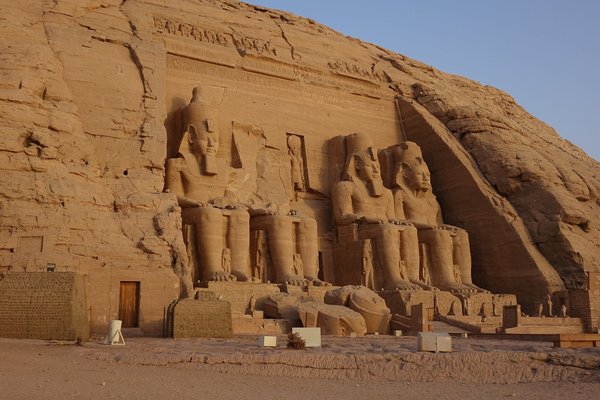Egypt
Nubian Monuments
The Nubian Monuments from Abu Simbel to Philae cover a string of ancient archaeological sites in southern Egypt.
Extending from Aswan to the Sudanese border, they were built by various pharaohs from the 2nd millennium BCE onwards in their attempt to gain or retain dominance over the Nubian kingdom and its natural assets such as gold, copper and ivory. The monuments date from the New Kingdom to the Ptolemaic, Roman and early Christian periods. After an international safeguarding campaign, two of its masterpieces (the temples of Abu Simbel and the sanctuary at Philae) were moved in their entirety to a nearby location due to the creation of the Aswan High Dam and Lake Nasser.
Community Perspective: Abu Simbel is the crowd magnet, but Philae comes especially recommended for its delightful setting and detailed hieroglyphs and carvings. Els describes an overnight visit to Abu Simbel, while Nan gives practical info on getting around Aswan and Philae.
Site Info
Official Information
- Full Name
- Nubian Monuments from Abu Simbel to Philae (ID: 88)
- Country
- Egypt
- Status
-
Inscribed 1979
Site history
History of Nubian Monuments
- 1979: Inscribed
- Inscribed
- Type
- Cultural
- Criteria
- i
- iii
- vi
Links
- UNESCO
- whc.unesco.org
- Official
-
- egypt.travel — Aswan
- egypt.travel — Abu Simbel
All Links
UNESCO.org
- whc.unesco.org — whc.unesco.org/
Official Website
- egypt.travel — Aswan
- egypt.travel — Abu Simbel
News Article
- Jan. 20, 2023 heritagedaily.com — Ancient Egyptian tomb uncovered at Tombs of the Nobles with mummified crocodiles
- May 30, 2013 english.ahram.org.eg — Locals prevent 630 tourists from leaving Abu Simbel
Community Information
- Community Category
- Archaeological site: Egyptian
- Archaeological site: Near Eastern
Travel Information
Recent Connections
-
James Bond in Movies
The Spy Who Loved Me (1977) -
Misleading WHS Names
It includes Elephantine Island which is… -
Foreigner prices
Egyptian: 4 LE, Foreign: 70 LE
Connections of Nubian Monuments
- Individual People
-
-
Emperor Trajan
Philae - Trajan's Kiosk -
Giovanni Belzoni
Feb 1817 - discovered the Great Temple of Abu Simbel and cleared it of sand. -
Johann Ludwig Burckhardt
"rediscovered" Abu Simbel on 22 March 1813 -
André Malraux
Presided at the ceremony held at UNESCO HQ Paris in Mar 1960 to launch the International Campaign for the Preservation of the Monuments of Nubia which ultimately led to the preservation of Philae and Abu Simbel. Text of his speechSee findarticles.com
-
Prince Pückler
Abu Simbel ("Prince Pückler Muskau has engraved his and his "ordenskreuz" in huge letters on the naked breast of that August and pathetic giant who sits at Abu Simbel. I wish someone would kick him for his profanity." - Lady Duff Cooper in 1902) and Philae -
Elias Burton Holmes
Abu Simbel 1906See www.taschen.com
-
Florence Nightingale
In 1849/50 she visited Egypt and sailed up the Nile as far as Abu Simbel. Her very detailed letters home have been published as "Florence Nightingale - Letters from Egypt" and are readable on Internet archiveSee archive.org
-
- Geography
-
-
Sahara
Part of the Sahara desert ecoregionSee en.wikipedia.org
-
Nile
-
- Trivia
-
-
Sound and Light Show
There are shows at both Philae and Abu Simbel -
Tobu World Square
-
On Banknotes
Nubian Temples; 1 Egyptian pound; 1951 and many others -
Replica in Legoland
Abu Simbel -
In Video Games
Serious Sam 3 – Abu Simbel, Philae; Age of Mythology: Set: Hathor's temple at Abu Simbel -
Cercle events
Abu Simbel (WhoMadeWho)See www.youtube.com
-
Cultural sites taking up an entire island
Philae Temple Island -
Google Doodles
22 October 2012, Abu SimbelSee www.google.com
-
Moved from location of original construction
The Abu Simbel temples and those at Philae relocated to Agilika Island.
-
- History
-
-
Cold War
Egyptian President Nasser used Cold War enmity to play the US and the USSR off each other and ultimately secure Soviet funding for Egypt's desired Aswan High Dam on the Nile in 1956. As a result of the dam's construction, UNESCO initiated its Nubia campaign in 1959 in order to save the Nubian Monuments from Abu Simbel to Philae from the rising waters of Lake Nasser.See en.wikipedia.org
-
Hittites
Abu Simbel: The inconclusive (?) battle of Kadesh between the forces of Egypt and the Hittites - Ramesses II ("The Great") and Muwatalli II - is represented in bombastic pro-Egyptian terms via a series of carvings in the hypostyle hall (N Wall) "Two Hittite spies are captured and beaten until they reveal the true whereabouts of Muwatalli, the Hittite king. Finally, the two sides engage in battle, the Egyptians charging in neat formation while the Hittites are in confusion, chariots crashing, horses bolting and soldiers falling into the River Orontes. In the text, Ramesses takes on the whole of the Hittite army single-handed, apart from support rendered by [the god] Amun who defends him in battle and finally hands him the victory."
-
- Architecture
-
-
Rock Cut Architecture
Abu Simbel -
Domes
The Concrete Dome of the Reconstructed Temples -
Hypostyle
Temple of Isis at Philae - "The striking Hypostyle Hall conisists of ten huge pillars. Once beautifully painted, the pillars symbolize the first plants, trees and flowers of the earth which began to grow on the Primeval Mound (symbolized by the temple floor). On the ceiling (representing the sky), are images of the Day Boat and the Night Boat, and of the vultures of Upper and Lower Egypt." See
-
- World Heritage Process
-
-
Perfect Inscriptions
1979
-
- Religion and Belief
-
-
Goddesses
Philae sanctuary for Isis
-
- Human Activity
-
-
Historical Graffiti
"Graffiti inscribed on the southern pair by Greek mercenaries serving Egypt in the 6th century BCE have provided important evidence of the early history of the Greek alphabet". Also Victorian graffiti. -
Stone Quarries
Includes the ancient Egyptian quarry at Aswan which includes a part quarried obeliskSee en.wikipedia.org
-
Chariots
Relief of Ramses II located in Abu Simbel, depicted riding a chariot when fighting at the Battle of Kadesh
-
- Constructions
-
-
Obelisk
The unfinished obelisk in the stone quarries of ancient Egypt in Aswan (location 008).See en.wikipedia.org
-
Monumental Monoliths
The 'Unfinished Obelisk' at the Stone Quarrries in Aswan. It broke in situ and was never moved. Its weight is estimated at 1200 tonnes. -
Passage of the Sun
Abu Simbel - "The axis of the temple was positioned by the ancient Egyptian architects in such a way that twice a year, on Oct 20 and Feb 20, the rays of the sun would penetrate the sanctuary and illuminate the sculpture on the back wall, except for the statue of Ptah, the god connected with the Underworld, who always remained in the dark. These dates are allegedly the king's birthday and coronation day respectively, but there is no evidence to support this"
-
- Timeline
-
-
Built in the 2nd Millennium BC
The twin temples were originally carved out of the mountainside during the reign of Pharaoh Ramesses II in the 13th century BC, as a lasting monument to himself and his queen Nefertari, to commemorate his alleged victory at the Battle of Kadesh, and to intimidate his Nubian neighbors. (wiki)
-
- Science and Technology
-
-
Recorded cultural discoveries
Abu Simbel: Belzoni, 1817
-
- Visiting conditions
-
-
Foreigner prices
Egyptian: 4 LE, Foreign: 70 LE
-
- WHS Names
-
-
Misleading WHS Names
It includes Elephantine Island which is downstream of Philae (and not Nubian).
-
- Literature & Film
-
-
James Bond in Movies
The Spy Who Loved Me (1977)
-
News
- heritagedaily.com 01/20/2023
- Ancient Egyptian tomb uncovered at…
- english.ahram.org.eg 05/30/2013
- Locals prevent 630 tourists from l…
Recent Visitors
Visitors of Nubian Monuments
- Adrian Turtschi
- Alberto Rodriguez Gutierrez
- Alexander Barabanov
- Alexander Parsons
- alicemears
- Ali Zingstra
- Ammon Watkins
- AmyAbroad
- amychemu
- Argo
- arnaugir
- Artur Anuszewski
- ashombob
- Ask Gudmundsen
- Aspasia
- Atila Ege
- Badwater
- bergecn
- Bill Koo
- Boj
- Bram de Bruin
- Bropyk
- Carlo Medina
- Carlos Sotelo
- Chantal den Haan
- Cheryl
- CherylKla
- chiuliqi
- Christer Sundberg
- christof
- Clyde
- Colossus
- Corinne Vail
- Cristina Erba
- Csaba Nováczky
- cwthong
- Cyberczar
- Daniela Hohmann
- David Marton
- Dennis Nicklaus
- dmscanlan
- Dorejd
- DouglasR
- DutchHorn
- eljx1988
- Els Slots
- Erfe91
- Erik Jelinek
- Eva Kisgyorgy
- fabi-ddorf
- Fam39
- Fan Yibo
- Farinelli
- fedemarch92
- Federico P.
- Felicité
- Fernweh
- Fmaiolo@yahoo.com
- Francky D'Hoop
- Frédéric M
- GabLabCebu
- Garrett
- Gary Arndt
- George Gdanski
- GeorgeIng61
- Gernot
- giulio25
- grimloch
- Grzegorz Andruszkiewicz
- Hammeel
- Harald T.
- Harry Mitsidis
- H Beswick
- Hdhuntphotography
- henryjiao18
- Iain Jackson
- Ingrid
- IreneKD
- Ivan Rucek
- Jacob Otten
- janis
- Janos
- Jan-Willem
- Jarek Pokrzywnicki
- Jarrod_Byham
- Javier
- Javier Coro
- Jawnbeary
- Jay T
- Jean Lecaillon
- Jeanne OGrady
- Jeffrey Chai
- Jens
- JL
- João Aender
- Joel on the Road
- jonathanfr
- Jon Opol
- Jonoprout
- JR's HERITAGE SITES
- KarenBMoore
- Karito Vies
- KateY
- kelseyyurek
- Kevin McFarland
- Kevin Padley-Knight
- Klaus Freisinger
- Knut
- ko9757
- Krijn
- Krzysztof B
- Kurt Lauer
- La Concy
- Laurine
- Leafar98
- Liamps91
- Lillybett
- Little Lauren Travels
- Loic Pedras
- Lucio
- Ludvan
- Luis Filipe Gaspar
- Lukasz Palczewski
- Luke LOU
- Maciej Gil
- Maciej Gowin
- Malgorzata Kopczynska
- marcel staron
- MarcoB_0
- Marcobrey
- Mardigny
- Mariam
- Martin
- Martina Rúčková
- Matthewsharris
- MAURO PODDA PANI
- MaxHeAnouBen
- M.HATADA
- M. Huineman
- MichaelH
- Michael Novins
- Michael Turtle
- Mihai Dascalu
- Milan Jirasek
- Miloš Tašković
- MMM
- Monica Tasciotti
- MoPython
- Morodhi
- Naim Y
- nan
- Niall Sclater
- Nicole Lampos
- Nihal Ege
- opperpco3
- Paola Laura
- Patrik
- Paul Schofield
- Peltzi
- PeterH
- Peter Lööv
- Petteri
- Philipp Leu
- Philipp Peterer
- Pieter Dijkshoorn
- Pink Bunny
- Piotr Wasil
- Qin Xie
- Ralf Regele
- Randi Thomsen
- Reiseblog
- Reisedachs
- Reza
- Riccardo Quaranta
- Rick Ohm
- Rob Wilson
- Roger Ourset
- Roman Bruehwiler
- Roman Raab
- Sandmann15
- sbshipway
- Sergio Arjona
- Simonf
- SnakeGreen
- Solivagant
- Sorel Americo
- Squiffy
- Stanislaw Warwas
- stephhollett
- Svein Elias
- Szucs Tamas
- Taotao Chen
- Thomas Buechler
- Tim Allen
- Timothy C Easton
- tingmelvin
- tony0001
- travellingcat
- triath
- Twobaconsandaboston
- Vernon Prieto
- Viaje al Patrimonio
- V&M
- voyager
- Weecheng
- Westwards
- Wojciech Fedoruk
- Wo_ko
- YaroMir
- Yongcheng Liu
- Zach
- Zizmondka
- Zoë Sheng
Community Reviews
Show full reviews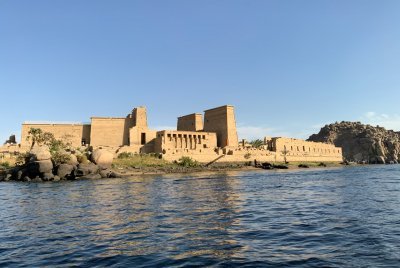
As with most World Heritage sites in Egypt the Nubian Monuments is not one single place to visit but many spread over a couple of hundred kilometres. This was my third visit to Abu Simbel in more than 50 years. The first time was in 1972, only one year after the New Dam had been completed and the water had started rising and flooding all those Nubian villages and monuments that had not been moved to higher ground. The UNESCO-led rescue operation that was completed in 1968 in itself deserves mentioning on the world heritage list. In 1972 we travelled in a Russian hydrofoil boat from the New Dam to Abu Simbel. It was a time of high political tension: the windows of our boat were blacked out and for three hours we could not see anything. On the dam itself we saw several air defence batteries. When we arrived we had to climb about sixty meters to the new temple site. What is different today, there is an airport, a tourist village is now sprawling behind the temples, the river now much closer to the temple plateau, and the artificial dome supporting the re-erected temple is no longer accessible as it used to be.
Abu Simbel is clearly worth a visit. The site was re-discovered by the Swiss traveller Johann-Ludwig Burckhardt in 1813 - he is buried in a small and hidden cemetery in Old Cairo. The two temples - the larger with the four colossi of Ramses …
Keep reading 0 comments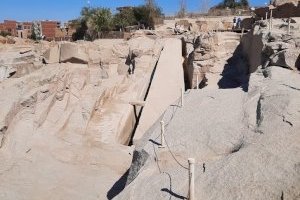
Abu Simbel had been on my to visit list for a long time. After several community went for NYE and still being in possession of a Lufthansa 300EUR flight voucher from 2020, I decided to finally go.
Flying in from Cairo, I stayed in Aswan for 2 nights. On the first day, I visited Philae, Kom Ombo (T) and the ruins of Elephantia, ending the day drinking beer on the Nile. On my second day, I joined a way too early tour to get to Abu Simbel and then ticked of the unfinished obelisk in town proper. Due to bad planning, I missed the Islamic cemetery just across the road from the obelisk.
Both Elephantia and the Obelisk are rather normal WHS locations. It's Philae and Abu Simbel that make this a very special site. Of the components, I would rank Philae higher than Abu Simbel. The issue with Abu Simbel is that the setting feels artificial. The hill is man made. When you arrive as you have to walk around the artificial hill and it takes away from the wonder. I would assume that the original location was a scenic cliff side. While Philae was also moved, the island chosen is still an island and kept it's spirit. In addition, Abu Simbel is a 6h desert drive for a one hour visit. There is little to see apart from the two temples. ... Well, you will go anyhow.
Getting There
Luxor (and any itinerary featuring …
Keep reading 0 comments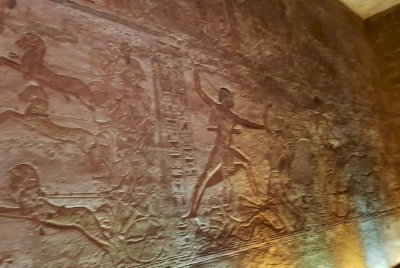
WHS#61
Abu Simbel is the ultimate destination for a traveller in Egypt. It's so far removed from civilization, so distant from everywhere else most people visit in Egypt. Yes, the pyramids may have brought you here, but only Abu Simbel will bring you so far off the beaten track - except now, so many people visit that it has created it's own beaten track, and for good reason. This is the most unique ancient temple in Egypt, as it was built by Pharaoh Ramses II as a shrine. To himself, basically. This dude was so full of himself and his achievements that at the success of his military campaigns in Nubia, he proceeded to build what would become an amazing wonder of the world with his face all over it. I got to visit Abu Simbel and Philae on my trip to Egypt in May 2018, and man, it was hot there! Every day, we'd settle down after lunch to avoid the over 40-degree heat. Nevertheless, this Nubian experience was one of the most interesting parts of Egypt. Nubia was once an ancient power, and to this day, it's a distinct culture with its own unique traditions and language. From the ruins of Abu Simbel to the modern-day Nubian village, a trip to this part of Egypt is an immersion into the historic and present culture of Nubia.
The day after arriving Aswan was the tour to Abu Simbel. As many may already know, it's an amazing site. …
Keep reading 0 comments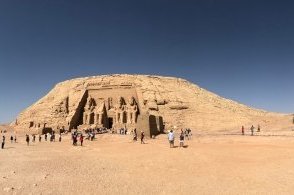
In October 2018, I made a day trip from Aswan to visit Abu Simbel, two massive rock temples in Nubia, near Egypt’s southern border with Sudan. The twin temples were carved out of the mountainside more than 3,000 years ago, but eventually became buried by Sahara desert sand and forgotten until 1813, when found by the same Swiss orientalist who discovered Petra just a year before. But it’s Abu Simbel’s recent history that’s mind boggling. In the 1960s, Egypt began constructing the Aswan High Dam to control Nile flooding, provide water for irrigation and generate hydroelectricity, but whose rising waters would submerge the temples. It was decided to relocate the temples to higher ground. So, between 1964 and 1968, the temples were cut into massive blocks, dismantled, lifted and reassembled in a new location 65 meters higher and 200 meters farther from the Nile onto a purpose-built hill. In gratitude, the Egyptian government gifted temples to the main countries that took part in the relocation, which is how the Temple of Dendur came to be on display in the Metropolitan Museum of Art in New York.
Keep reading 0 comments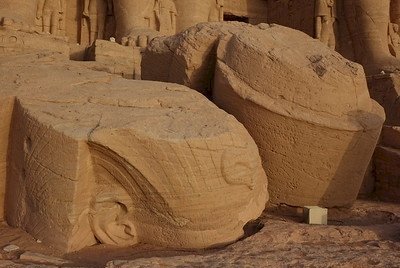
The Nubian Monuments from Abu Simbel to Philae comprise 10 archaeological sites in the far south of Egypt. They were the products of the pharaonic attempts to dominate Nubia.
Many trip reports from the past about Abu Simbel start with the compulsory convoy that has to be taken to travel there from Aswan, effectively limiting arrival times to two times a day. The convoy has been discontinued however since October 2016. So after leaving my dahabiya near Aswan, I was picked up by a car and driver at 9 a.m. for the 3-hour drive south. The drive is incredibly boring, just a desert road with maybe one or two gas stations. There are road signs however to temples in the desert – two of them are Amada and Wadi es-Sebua which are also part of this WHS.
I was staying overnight to be able to visit the temples without tour groups being there, and also to get a hint of the Nubian feel of the town of Abu Simbel. My latter wish was completely satisfied by the Eskaleh Lodge, an oasis of friendliness where hypnotizing Sudanese music was played all day long. At 3 p.m. I was picked up by a driver and guide for my scheduled visit to the temples. Somehow the tour company had found it necessary to send a guide, although it isn’t of much use (they are not allowed inside the temples). But well, he bought the tickets and explained the essence of the …
Keep reading 0 comments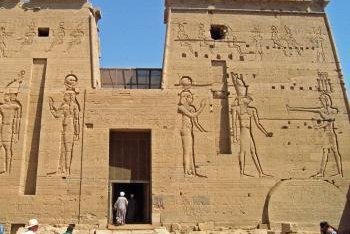
The Nubian Monuments from Abu Simbel to Philae were the absolute highlight of my trip to Egypt in the fall of 2012. Over fifty years ago, the preservation and movement of these monuments became the first major cultural project undertaken by UNESCO, saving these treasures from submersion under Lake Nasser. Ever since I'd seen pictures of Egypt when I was younger, I'd wanted to see the Temple of Ramses II at Abu Simbel, and even though Egypt Air did its best to complicate my visit by rescheduling my flights, I was not disappointed. The four statues of Ramses II outside the temple were colossal, and inside the temple two rows of slightly smaller statues of Ramses II led to the inner sanctuary. The walls were covered with hieroglyphs, and the temple was remarkably well-preserved; there was little to tell it had been relocated. After flying back to Aswan, I visited the beautiful Philae Temple at night and by day. The temple is on an island, and the approach by water was both memorable and aesthetically pleasing. I loved the hieroglyphs and carvings, like those of pharoah Neos Dionysos (Ptolemy XII) offering sacrifices to Horus and Hathor, which were amazingly detailed. To anyone traveling to Egypt, I highly recommend making time to see these treasures.
Logistics: When I visited, Abu Simbel was only accessible via a plane flight from Aswan or Cairo. Philae Temple is on an island outside the city of Aswan, and there are several tour operators in the …
Keep reading 0 comments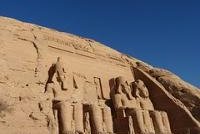
I visited this WHS in March 2010. The Temple of Ramses II at Abu Simbel and the Sanctuary of Isis at Philae were saved from the rising waters of the Nile and both are immensely beautiful. Abu Simbel is surely one of Egypt's top WHS.
Keep reading 0 comments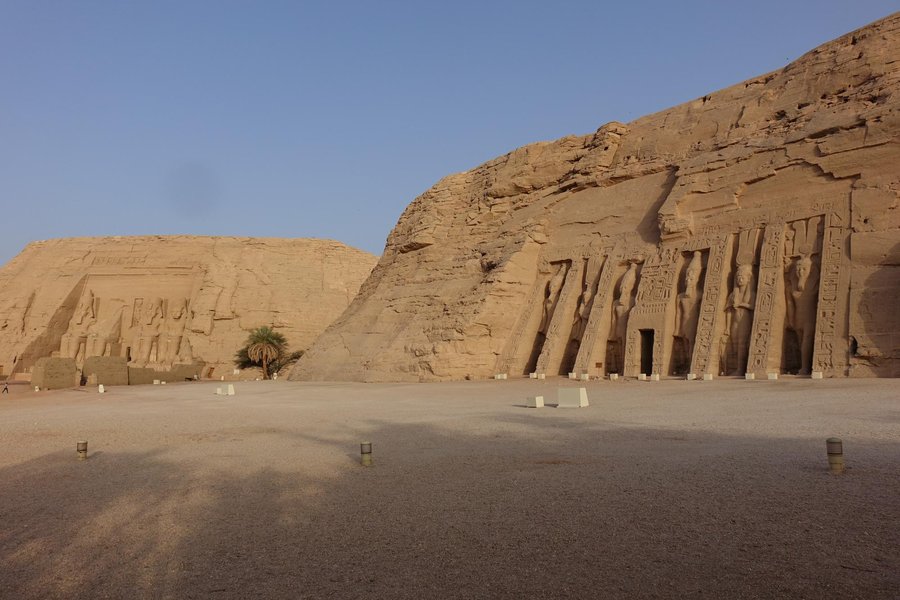
I have been lucky enough to visit Abu Simbel several times, and also managed to time one of these visits to coincide with the sunrise lighting up the statues at the back of the temple. I am as much in awe of the rescue of Abu Simbel as of its original construction. I also visited the monuments on Lake Nasser a few years ago, and plan to return in 2011.
The UNESCO campaign of the 1960's impressed me so much that I decided to base my dissertation for my MA in Egyptian Archaeology on the rescued Nubian monuments. I am using them as a case study, to measure to what extent the rescue - but subsequent removal to other countries - has enabled a wider understanding of the original culture.
As a tool to help me collect people's opinions, I have created my own website explaining my project, and including a blog. I would very much appreciate receiving your comments, and those of your readers. I also hope to publish a link to a survey soon on my website, but I need to increase readership first to make this worthwhile. The site is here www.whithernubia.co.uk
Keep up the good work!
Keep reading 0 comments
Nubian Monuments: In 1988 I spent 18 days crossing the Nubian Desert of Sudan. Then I took the run down Sudanese barge crossing lake nasser ending in Aswan. The journey was on deck class with about 1000 Sudanese and took 48 hours. Remains of the other Sudanese ferry could be seen. Everyone drowned or were eaten by Nile crocodiles. Along the way was a magical glimpse of Abu Simbel in the distance. It was a timeless and powerful experience.
Keep reading 0 comments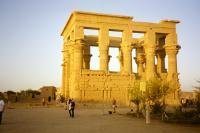
After having enjoyed the life in Cairo for a week - one of the truly most exciting cities in the world - I then took the train from the bustling Ramses station down through the Nile valley heading for Aswan in southern Egypt. Instead of catching a plane, this is a recommendable way to see some of the river landscape and rural Egypt, as the train slowly follows the river, downstream to Luxor and 14 hours later arrives in Aswan.
Aswan itself is a lush oasis and virtually the 'last stop' before Sudan and the Nubian deserts takes ove and is itself well worth a stop for a couple of days. A short, early morning flight, then took me the last 300 km down to the famous Ramses-statues in Abu Simbel, moved away from the rising water when the Aswan dam was constructed back in 1972. Once on site, you realise what a majestic project this must have been, almost more impressing than the actual statues themselves.
Later the evening, I also visited the temples of Philae, which was also moved away from the rising water and are now located on a small island not too far from the dam itself. Small boats takes you across the water and you can enjoy the beauty of the temple of Isis and Trajans Kiosk, the latter being one of the most photographed temples in Egypt, while having a tea or a drink in the small café.
Keep reading 0 comments
The area between Assuan and the Sudanese border is one of the greatest (and largest) archaeological areas in the world - unfortunately, much of it is located beneath Lake Assuan. However, the greatest temples - Abu Simbel and Philae -, have survived thanks to UNESCO's help and major feats of engineering, as well as smaller sites at islands like Elephantine. Philae is a very interesting and beautiful place, but there are few words to describe the magic of Abu Simbel, the temple built by one of Egypt's greatest rulers, Pharao Ramses II. Seeing the sun rise at Abu Simbel is an unforgettable experience, even after a four-hour bus ride from Assuan leaving at 3 am. Needless to say, flying is a lot quicker and easier. Assuan itself is a relatively pleasant town with a nice bazaar, a great botanical garden at Kitchener Island, and the Nubian Museum, which I unfortunately missed. The extreme south of Egypt is one of the most interesting parts of the country and must not be missed by any serious traveller.
Keep reading 0 comments
Abu Simbel is just 40 km from the Sudan and 100 km from any decent sized Egyptian city. The best way to visit is to fly there from Luxor or Aswan. Return flights are less than US$80. The temple was completely dismantled and moved to a higher site when the Aswan High Dam was constructed. If that hadn't happened, the site would be 60m underwater right now. That action was UNESCO World Heritage's first big save at an expense of US$40M in the 1960's and 70's.
Abu Simbel is massive and is perched high on a cliff at the edge of Lake Nasser. The 4 statues of Ramses II at the entrance are more than 30ft high each. The interior is covered with exceptional carvings and paintings.
Philae is at the edge of Aswan also on Lake Nasser. You have to take a quick ferry to get there. This is considered the most beautiful temple in Egypt -- (sort of their Aphrodite). ALthough the structures are less intact that most other Egyptian temples, the island site is beautiful, especially at sunset.
Keep reading 0 comments
